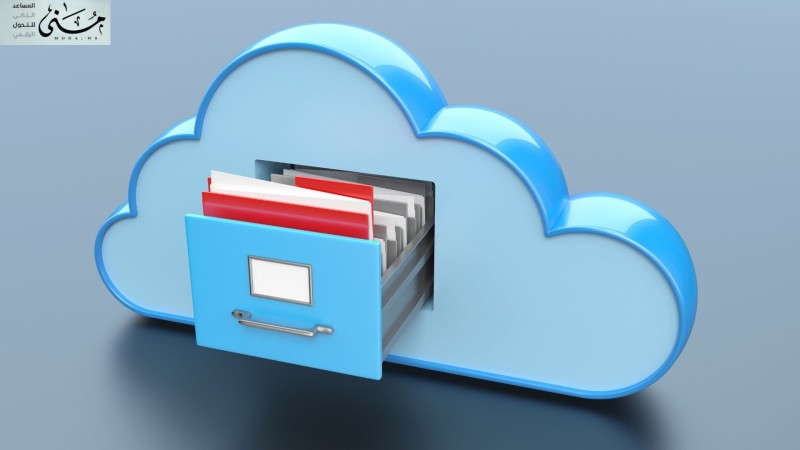In the world of modern organizations, success is no longer limited to human resources or the size of technical investments. Rather, the internal administrative and organizational structure has become one of the most prominent secrets of excellence. One of the most prominent pillars of this structure is the digital archive, which has become the beating heart of corporate operations.
A digital archive is more than just a space for storing documents and records. It is a smart system that helps speed up transactions, ensure regulatory compliance, and improve decision-making.
When digital archives are organized effectively, using advanced tools like DocSuite, this leads to a quantum leap in overall administrative performance and reduces the time wastage and procedural complexity experienced by paper-based organizations or those that rely on primitive archiving.
How does digital archives help speed up transactions?
One of the fundamental challenges facing any traditional organization is the time wasted searching for documents or reviewing paper copies of orders and decisions. Conversely, a digital archive system can save hours of work in seconds. An organized digital archive uses intelligent indexing techniques, advanced search engines, and links documents to their chronological, administrative, or thematic contexts.
When an organization can retrieve a document by a specific date, or view an entire transaction within minutes, it directly impacts internal and external customer satisfaction. Flexible document organization within a digital archive creates a consistent environment that enables different teams to access only authorized documents, enhancing information security and reducing human error caused by the use of outdated forms or files.
It can be said that organizations that adopt smart digital archiving no longer suffer from lost documents or duplicate efforts in preparing the same files, because the system operates with continuous integration and updating, efficiently linking each component to the other.
Digital Archives as a Compliance and Internal Control Tool
When we talk about compliance, the first thing that comes to mind is adherence to legal and regulatory policies and procedures within the organization. This is where the power of digital archives comes into play, as every action is automatically and irrevocably saved, creating a transparent and auditable record at any time.
By using tools like DocSuite, an organization can implement governance controls. These systems allow you to record who modified, uploaded, printed, or even viewed a document, providing an indispensable audit trail for regulatory authorities.
The efficiency of digital archiving also facilitates internal and external audits, as audit teams are provided with all documents organized chronologically or by subject. This increases readiness and reduces administrative stress when files are requested by compliance agencies. The more efficient the archiving, the greater the organization's ability to demonstrate its compliance with relevant instructions, regulations, and systems. This is reflected in its corporate reputation and competitiveness.
A living model of digital archiving efficiency
By leveraging modern solutions like DocSuite, many organizations have achieved a radical administrative transformation. The system enables the creation of an advanced electronic archiving environment that is directly linked to all departments of the organization, from human resources management to legal affairs, and finally administrative and technical affairs.
The system provides a flexible and user-friendly interface, enabling employees to upload, organize, and categorize files using standardized criteria. It also enables seamless integration with administrative communications systems and corporate workflows. When used in conjunction with decision support tools and data analytics, the digital archive becomes a rich data mine that helps monitor trends and improve overall operational performance.
What makes DocSuite stand out is that it goes beyond storing documents. It also helps organize documents and link them to various corporate processes, making it an indispensable, comprehensive solution for your digital transformation journey.
Digital archiving as a long-term strategic value
Digital archiving is not just a technical option; it is a long-term investment in improving governance, enhancing efficiency, reducing waste, and ensuring institutional business continuity. Organizations that neglect to build an organized digital archive later suffer from data loss, difficulty responding to emergencies, weak compliance, and low customer satisfaction.
Organizations that make digital archives their information management center achieve tangible results in terms of response time, employee productivity, and reduced administrative errors.
When a digital archive is built according to global standards and integrated with other systems, the organization becomes more flexible in expanding, better prepared to deal with market changes, and more capable of making timely decisions.
Therefore, it is important to include archiving efficiency as a key component of organizations' strategic plans, not only as a means of reducing paper, but also as a smart platform for knowledge management and sustainability.
What happens when the digital archive is gone?
The absence of a digital archive doesn't just mean a reversion to traditional methods; it also poses a host of problems that hinder institutional work. The first of these is the time wasted in manual searches, and the second is the potential loss of important files due to damage or poor organization.
The lack of intelligent tools for organizing documents also means an increased likelihood of conflicting versions and a lack of credibility in approved documents. On the compliance front, organizations become vulnerable to accountability due to the inability to prove actions taken or the lack of an accurate timeline.
In this context, the solution does not lie in partially digitizing the archive, but rather in adopting an integrated approach through systems like DocSuite, which provides everything an organization needs in a single platform, from document archiving and organization to linking them to administrative procedures.
Corporate success in the 21st century depends largely on the organization's digital readiness, and there is no digital readiness without an organized and effective digital archive.
Archives are the organization's memory, and when they are organized and activated through smart solutions like DocSuite, the organization will have laid a solid foundation for sustainable growth, full compliance, and advanced operational efficiency. Investing in digital archiving should be a strategic decision, not just a temporary option.
Integration between digital archives and comprehensive administrative transformation
Administrative transformation is no longer simply a matter of digitizing files or replacing paper with screens. Rather, it represents an integrated corporate vision that aims to redefine the way we work, reduce waste, and raise the level of performance and transparency. This can only be achieved through an organized digital archive integrated within the overall administrative structure.
The integration of digital archives with administrative systems such as human resources, workflow, and finance means that every piece of information recorded becomes traceable and retrievable, ensuring no duplication of data or manual update errors. Imagine a work environment where a complete employee record, project documents, or issued decision can be viewed within minutes, without having to open physical files or contact multiple departments.
This is the essence of the administrative transformation based on the efficiency of digital archiving, which provides every official or manager with the tools necessary to make appropriate decisions based on accurately documented and archived data. Digital archiving also enhances the organization's readiness to respond quickly to regulatory or legislative changes, as it enables the restructuring of information according to new requirements without the need to reprint or reorganize files.
Therefore, organizations seeking to achieve a true administrative transformation based on quality and governance standards find DocSuite to be a practical model for this integration.
The role of digital archives in enhancing institutional transparency
In an era of increasing demands for governance and transparency, it has become essential for organizations to have tools that ensure the robust documentation of all administrative processes. This is where digital archives come in, transforming documents from stagnant files into vital sources of information. By recording all amendments, approvals, and attachments within a single system, any decision or transaction can be reviewed effortlessly.
This applies not only to senior management, but also to teams and executive departments. Documents can be shared securely, with highly defined access rights. This type of document organization opens the door to true transparency, as the organization can substantiate every administrative decision based on a documented archival record.
Archiving efficiency also ensures that previous versions of important documents are preserved, enhancing the possibility of subsequent review or investigation of any discrepancies in information. Perhaps one of the most prominent advantages of using a system like DocSuite is that it provides accurate review mechanisms and logs of activities on each document, which enhances a transparent work environment and reduces the risks associated with undocumented decisions or irregular procedures.
Requirements for building a successful digital archive
To achieve the desired success of adopting digital archives, systematic steps must be followed, beginning with an assessment of the current archive within the organization and determining the size, types, and administrative distribution of documents. Next, a clear document classification structure must be designed to facilitate the organization and retrieval of files by users. Employees must also be trained on how to use the approved digital platform. The system used for digital archiving must be capable of supporting updating, adding, and retrieval processes, while ensuring security and integration with other administrative systems.
This is where the value of smart systems like DocSuite comes into play. They enable an organization to easily build a comprehensive archive, without the need for radical changes to infrastructure or technical complexities. Clear internal policies for using the digital archive must also be established, including who has access, how documentation is conducted, and what procedures should be followed when a document is lost or modified. When all of these elements are integrated, the digital archive becomes not just a technical tool, but an organizational foundation upon which the organization's success is built, both now and in the future.
Digital Archives and Sustainable Institutional Excellence
Ultimately, organizations striving to achieve excellence cannot overlook the importance of digital archives, as they reflect the professionalism of internal operations and their ability to respond to challenges.
When every document is archived, every procedure is documented, and every piece of information is retrievable within seconds, the organization stands on solid ground in the face of change. Corporate excellence is no longer a luxury, but a requirement for competitiveness in the market and part of the organization's reputation with its partners, customers, and community.
Therefore, the efficiency of digital archiving has become one of the criteria by which an organization's performance is measured, just as financial or production performance is measured. The direct positive impact that systems like DocSuite have in achieving this excellence cannot be ignored. They not only provide archiving tools, but also offer an advanced management philosophy based on organization, analysis, integration, and documentation.
Therefore, investing in building a digital archive is not just a temporary project, but rather a sustainable strategy that puts an organization on the path to success and protects it from crises such as information loss, document loss, or poor administrative performance.
 ما هو سر نجاح المؤسسات؟ تعرف على أهمية الأرشيف الرقمي المنظم والفعال
ما هو سر نجاح المؤسسات؟ تعرف على أهمية الأرشيف الرقمي المنظم والفعال




Comments
Add New Comment